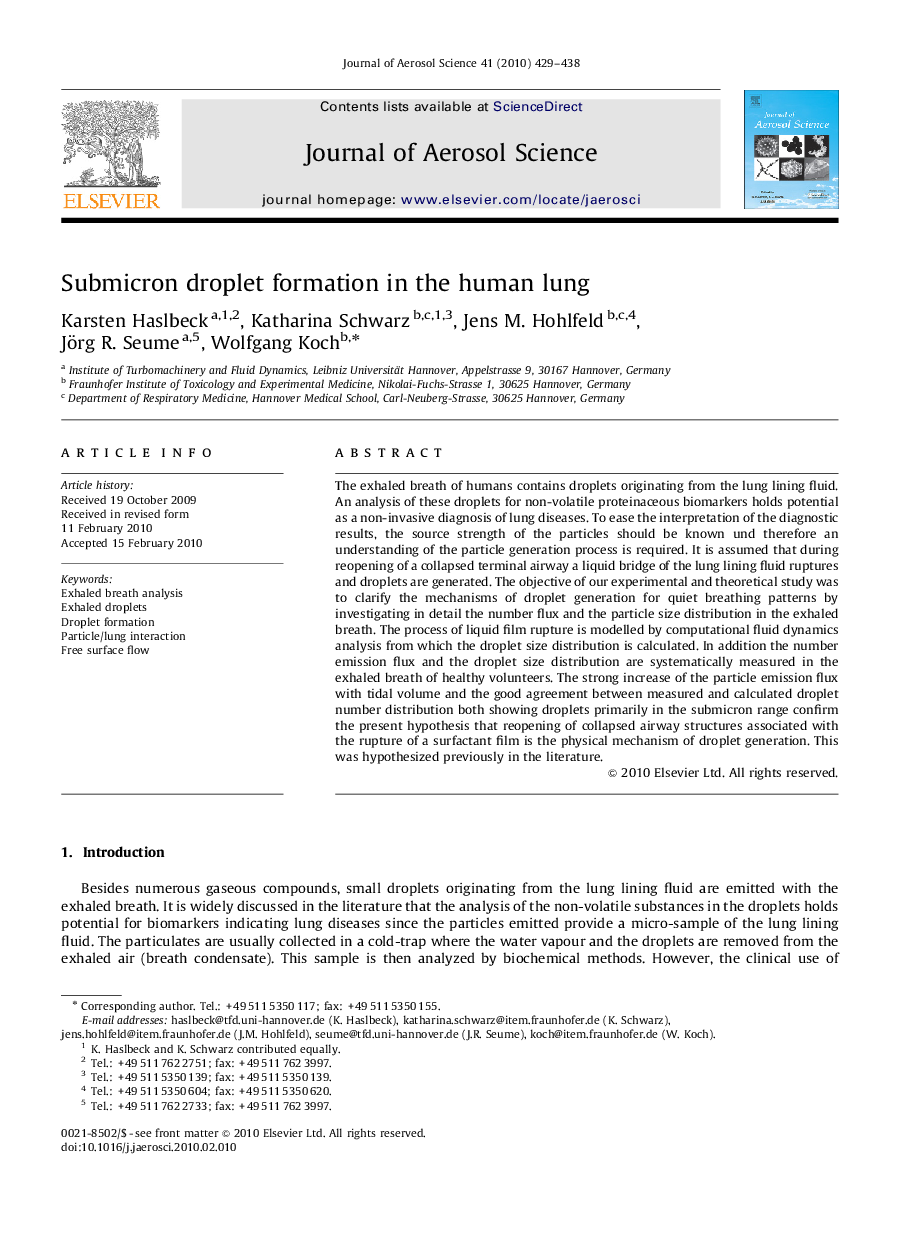| Article ID | Journal | Published Year | Pages | File Type |
|---|---|---|---|---|
| 4452720 | Journal of Aerosol Science | 2010 | 10 Pages |
The exhaled breath of humans contains droplets originating from the lung lining fluid. An analysis of these droplets for non-volatile proteinaceous biomarkers holds potential as a non-invasive diagnosis of lung diseases. To ease the interpretation of the diagnostic results, the source strength of the particles should be known und therefore an understanding of the particle generation process is required. It is assumed that during reopening of a collapsed terminal airway a liquid bridge of the lung lining fluid ruptures and droplets are generated. The objective of our experimental and theoretical study was to clarify the mechanisms of droplet generation for quiet breathing patterns by investigating in detail the number flux and the particle size distribution in the exhaled breath. The process of liquid film rupture is modelled by computational fluid dynamics analysis from which the droplet size distribution is calculated. In addition the number emission flux and the droplet size distribution are systematically measured in the exhaled breath of healthy volunteers. The strong increase of the particle emission flux with tidal volume and the good agreement between measured and calculated droplet number distribution both showing droplets primarily in the submicron range confirm the present hypothesis that reopening of collapsed airway structures associated with the rupture of a surfactant film is the physical mechanism of droplet generation. This was hypothesized previously in the literature.
